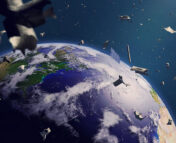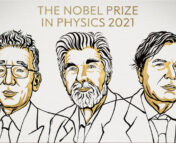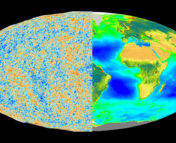It is hard to miss one of today’s greatest challenges: our climate is changing at an alarming rate, and we’re to blame. After decades of awareness about the climate crisis, after decades of idleness and ignorance, finally some – yet limited – attempts are made to address this problem.
As numerous countries, institutions and individuals reflect on how to contribute positively to the climate crisis, many astronomers also want to do better. Soberingly, astronomy has a larger impact on climate change than most other professions, made abundantly clear by recent research. However, there are also a few positive notes. Aside from promoting general awareness and having a strong impetus for progress (like the A4E movement for example), astronomy and the space industry have some important contributions to addressing the climate crisis:
Don’t look up, look down!
Astronomy plays a large part in the accurate monitoring of climate change with the use of satellites. There are a lot of satellites in orbit, over 4550 in fact, all with their specific purposes. While the majority of these satellites are used in communications, over one in five is used for Earth observations (about 10 times more than the number used for space observations). This makes Earth easily the object most heavily observed from space.

Nearly 4 percent of all working satellites, or over 160 (see Figure 1 for a few examples), are directly used to measure 54 essential climate variables. Over half of these variables can only be measured from space, and the list includes:
- Atmosphere: greenhouse gas (GHG) concentrations, ozone abundances,
cloud properties, atmospheric currents, … - Ocean: sea ice coverage, sea level, oceanic currents, …
- Land: Glaciers, permafrost, surface temperatures, wildfires, …
Aside from the direct monitoring of GHG emissions, sea level rise and overall changes in polar ice caps and oceanic currents, these data are also used in accurate climate modeling and predictions. The National Center for Atmospheric Research gives a nice overview of exactly what each satellite is responsible for observing. Both NASA and the European Space Agency (ESA) conduct numerous missions dedicated to observing Earth’s climate.
Despite the still massive GHG emissions of spaceflight (although there are some efforts for improvement), satellite data has proven to be crucial for climate science and will remain so in the future (see Figure 2) by offering global coverage and consistent time series on a scale simply not possible from the ground. This web app shows you what satellites can actually observe on Earth.

Designing, building, and launching satellites is only part of the problem, however. Another challenge is to put their large volumes of data to good use. There are several large active projects aimed at analyzing the data these satellites provide: ESA’s Climate Change Initiative combines multiple projects, each with their own focus on climate change data from satellites; JPL’s Carbon Mapper and the MethaneSat project use satellite data to track and monitor CO2 and methane emissions, amongst others. On top of that, many organizations such as NASA and ESA have adopted an open access for satellite data policy, making this data accessible to everyone.
So, astronomy and space technology contribute directly to climate change monitoring. What else can we do?
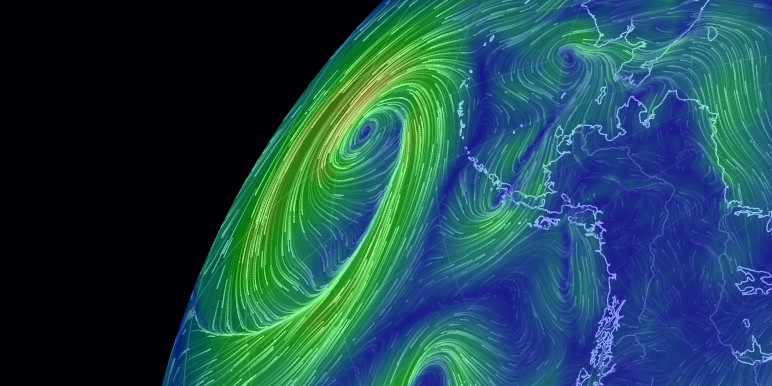
To mitigate or not to mitigate?
To mitigate of course! Individually, astronomers – or anyone for that matter – can already help a great deal. Here’s how astronomy and the space industry have made their mark on the mitigation of climate change:
- Solar panels, unsurprisingly, need as much sunlight as possible. Trying to work out the optimal location for your new solar energy farm can be a nuisance. Maybe the weather is not very good where you are? Preferably you want very few clouds for your solar farm. Here is where satellites offer a solution. Not only do they provide weather forecasts (see Figure 3), but they can also be used to model the perfect position for maximum output of your solar array. Thanks to satellite data, a global solar atlas can be built, showing you where the sun shines the most!
- Wind turbines in outer space are not very effective sadly, but satellites can still take a peek as to where we should build them on the ground. Earth observations are a great tool for assessing where to put offshore wind farms. Satellites also allow for compiling a global wind atlas, showing directly where your wind turbine is most effective.
- Accurate imaging (you guessed it, by satellites) is able to reveal geothermal hotspots, showing where to build geothermal power plants. Although some countries are more blessed than others with geothermal energy, this can still be a major contributor to green energy.
In short, the renewable energy industry can count on the support of satellite data for planning and optimization. Additionally, the green energy sector has profited from technologies originating from space exploration. Both NASA and ESA have their technology transfer programs supporting developments in renewable energy.
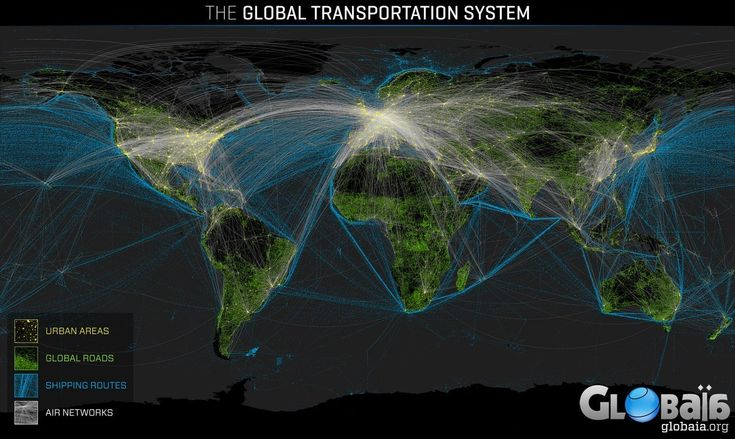
A large chunk of present-day emissions comes from transportation. The combined effect of road traffic, shippings and airplanes has a heavy weight on our climate. With today’s global scale of transportation (see Figure 4), GPS data and Earth observations can be used to optimize large-scale logistics everywhere, considerably cutting emissions. From smart systems in the shipping industry and air transport, to studies on improving traffic flows, data gathered by satellites is a pathway to many possibilities, some considered to be environmentally friendly.
Combining all these efforts and putting the research and usage of these techniques into the next gear can certainly help us create a more hopeful future. Maybe, some day, we are meant to leave this world, but for now we’re not going anywhere. It’s better to look after our world as well instead of only looking for a new one. Astronomy can do both.
Astrobite edited by Pratik Gandhi.
Featured image credit: Suchitra Narayanan

